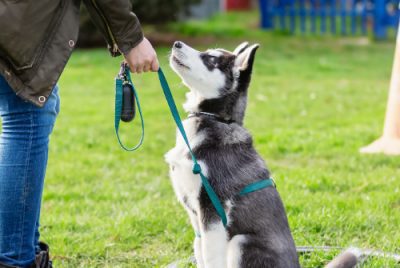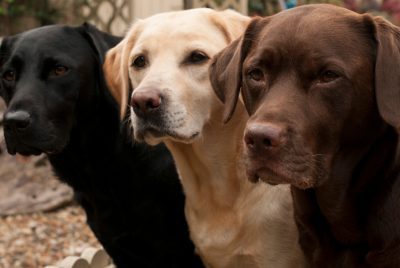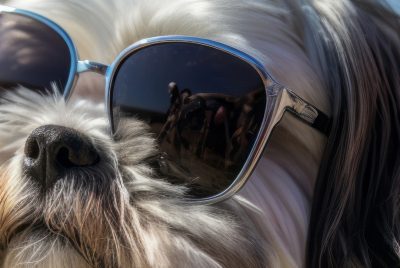Top 10 Dog Breeds With Separation Anxiety
Post Disclaimer
We may earn a commission for purchases made using our links. Please see our Disclaimer to learn more.
Top 10 Dog Breeds That Suffer From Separation Anxiety
How does separation anxiety manifest in dogs?
Separation anxiety in dogs can lead to destructive behavior, excessive barking, pacing, and even self-injury. Dogs suffering from separation anxiety may also exhibit symptoms like excessive drooling, urination or defecation indoors, and attempts to escape or dig under fences.
Key Highlights
- Some dog breeds are more likely to experience anxiety, feeling nervous and stressed when they are by themselves.
- Labrador Retrievers, German Shepherds, and Bichon Frises are recognized for being susceptible to separation anxiety.
- Toy Poodles, Jack Russell Terriers, and Border Collies also tend to suffer from separation anxiety because of their energy levels and need for stimulation.
- Understanding and addressing your dog’s separation anxiety is crucial to promoting their well-being and contentment.
- Early indications of separation anxiety in dogs include barking, destructive behavior, and signs of distress.
- There are methods to help alleviate your dog’s separation anxiety, such as offering toys, maintaining a demeanor when leaving or returning home, ensuring they receive enough exercise, and sticking to a consistent schedule.
Introduction
Dogs are social creatures that form strong bonds with their owners. When left alone, they can experience anxiety and loneliness, which may indicate separation anxiety. Understanding your dog’s breed is crucial, as some breeds are more prone to this condition. This article highlights the top 10 breeds known for separation anxiety and offers management tips. Symptoms include destructive behaviors like chewing and barking and signs of distress such as excessive panting and pacing. Recognizing these signs is key to helping your dog cope with anxiety.
10 Dog Breeds Known for Their Separation Anxiety
Some dog breeds tend to be more susceptible to separation anxiety than others. Certain breeds are known to feel anxious. Stressed when they are, by themselves. Lets explore the 10 dog breeds that are recognized for their tendency to experience separation anxiety.
1. Labrador Retriever
Labrador Retrievers are popular for their friendly nature, loyalty, and adaptability. However, due to their working breed background, they can suffer from separation anxiety. To prevent destructive behaviors like chewing and barking, provide them with mental stimulation and exercise through activities like puzzle toys and interactive games.
2. German Shepherd
German Shepherds are known for their intelligence and adaptability making them popular, for their loyalty and protective nature. However, their strong bond with their owners can sometimes lead to separation anxiety. Being working dogs, by nature German Shepherds may feel anxious and uneasy when left alone. They thrive on companionship. Enjoy having a purpose. In the absence of stimulation and physical activity these dogs may exhibit signs of anxiety and destructive behavior. To help ease their separation anxiety it’s important to provide them with exercise, training and mental challenges.
3. Vizsla
Vizslas are known for their affectionate and loving nature, making them excellent family pets. However, they are also prone to separation anxiety if they do not have enough human interaction during the day. Vizslas form strong bonds with their owners and thrive on companionship. When left alone for long periods, they can become anxious and stressed. It is important to ensure that your Vizsla gets plenty of time with you or other dogs to prevent separation anxiety. Providing them with toys and activities that can keep them mentally stimulated can also help alleviate their anxiety.
4. Australian Shepherd
Australian Shepherds are energetic and intelligent dogs originally bred for herding livestock. Their high energy levels and need for mental stimulation make them prone to separation anxiety. Australian Shepherds require a lot of exercise and activities to engage them physically and mentally. Without proper outlets for their energy, they can become anxious and develop destructive behaviors. Providing them with plenty of exercise, training, and mental stimulation can help alleviate their separation anxiety.
5. Italian Greyhound
Italian Greyhounds are known for their sleek and elegant appearance. Despite their small size, they have a lot of energy and intelligence. Italian Greyhounds are also companion dogs by nature and can become anxious when left alone for long periods. They thrive on human interaction and do not do well when left alone for extended periods. To help alleviate separation anxiety in Italian Greyhounds, providing them with plenty of attention, mental stimulation, and activities is important to keep them engaged.
6. Toy Poodle
Toy Poodles are small dogs known for their intelligence, elegance, and companionship. They are also one of the breeds prone to separation anxiety. Toy Poodles thrive on human interaction and do not do well when left alone for long periods. When left alone, they may bark excessively, destroy furniture, or have accidents indoors. Providing them with mental stimulation, interactive toys, and regular human interaction can help alleviate their separation anxiety.
7. Bichon Frise
Bichon Frises are small and affectionate dogs known for their cheerful personalities and fluffy white coats. They form strong bonds with their owners and can become prone to separation anxiety. Bichon Frises thrive on human interaction and do not do well when left alone for long periods. Providing them with positive associations when you leave, such as giving them a treat or a special toy, can help alleviate their separation anxiety. Early socialization and training can also help them become more confident and reduce their anxiety when left alone.
8. Border Collie
Border Collies are highly intelligent and energetic dogs known for their herding abilities. They are also prone to separation anxiety due to their high intelligence and need for mental stimulation. Border Collies require a lot of exercise and activities that challenge their minds to keep them happy and settled. Without proper outlets for their energy and intelligence, they can become anxious and develop destructive behaviors. Providing them with plenty of exercise, training, and mental stimulation can help alleviate their separation anxiety.
9. Cavalier King Charles Spaniel
Cavalier King Charles Spaniels are known for their affectionate nature and gentle temperament, making them excellent companion dogs. However, they are also prone to separation anxiety due to their strong attachment to their owners. Cavalier King Charles Spaniels thrive on human interaction and can become distressed when left alone for long periods. It is important to provide them with plenty of attention, mental stimulation, and activities that can keep them engaged to help alleviate their separation anxiety.
10. Jack Russell Terrier
Jack Russell Terriers are small dogs with big personalities. They are known for their high energy levels and strong bonds with their owners. However, these traits can also make them prone to separation anxiety. Jack Russell Terriers require a lot of exercise and mental stimulation to keep them happy and settled. When left alone, they can become anxious and develop destructive behaviors. Providing them with plenty of exercise, training, and activities that challenge their minds can help alleviate their separation anxiety.
Understanding and Managing Your Dog’s Separation Anxiety
Understanding and managing your dog’s separation anxiety is crucial for their well-being and happiness. Separation anxiety can cause a great deal of distress for dogs and can lead to destructive behaviors and emotional turmoil. It is important to recognize the early signs of separation anxiety, such as excessive barking, destructive behavior, and signs of distress. Various ways to help ease your dog’s separation anxiety include providing them with toys, being low-key when leaving and returning home, ensuring they get plenty of exercise, and sticking to a consistent routine.
Early Signs of Separation Anxiety in Dogs
Early spotting separation worry in dogs is important to handle and stop it from worsening. Signs include excessive barking, damaging behavior, distress alone, and trying to escape. Dogs with this issue may also show signs like heavy panting, drooling, or pacing. If you see these signs in your dog, consult a vet or dog trainer for help managing the concern. Training, socializing, and creating good experiences in solitude can reduce separation anxiety in dogs.
Strategies for Alleviating Separation Anxiety
Separation anxiety in dogs can be a challenging condition to manage, but some strategies can help alleviate the symptoms. Proper training is essential for teaching dogs how to cope with being alone. This includes gradually increasing the time they spend alone and rewarding them for calm behavior. Consistent routines can also help dogs feel more secure and reduce anxiety. Establishing a predictable schedule for feeding, exercise, and alone time can provide stability. Crate training can benefit some dogs with separation anxiety, providing them with a safe and secure space. Finally, mental stimulation is important for keeping dogs engaged and occupied when alone. Puzzle toys, interactive feeders, and other mentally stimulating activities can help distract dogs from their anxiety and keep their minds sharp.
The Importance of Exercise and Mental Stimulation
Regular exercise and mental stimulation are key to managing separation anxiety in dogs. Daily walks, playtime, and agility or obedience training help release excess energy and reduce anxiety. Mental stimulation is crucial for intelligent breeds prone to separation anxiety. Puzzle toys, interactive feeders, and obedience training keep their minds active and prevent boredom. By stimulating dogs physically and mentally, you can better manage their energy levels and reduce anxiety when alone.
Conclusion
Recognizing the signs and understanding how to manage separation anxiety in dogs, especially those prone to it is crucial for their well-being. Providing ample exercise and mental stimulation and implementing calming strategies can significantly help alleviate their distress. Early detection is key in addressing this issue effectively. Remember, each breed has unique tendencies, so being aware of your dog’s specific needs is essential in creating a safe and comforting environment. Stay informed and attentive to your furry friend’s behaviors to ensure they lead a happy and balanced life.
Frequently Asked Questions
What are the initial signs of separation anxiety in dogs?
The initial signs of separation anxiety in dogs include destructive behavior, such as chewing or scratching furniture, excessive barking or howling, pacing or restlessness, panting, drooling, and attempts to escape. Dogs with separation anxiety may also show signs of distress when their owners are preparing to leave, such as following them closely or becoming visibly anxious.
Can separation anxiety in dogs be cured?
While separation anxiety in dogs cannot be completely cured, it can be managed and reduced with proper training and consistent routines. Gradually desensitizing dogs to being alone and providing them with the tools to cope can significantly improve their anxiety. However, it is important to note that some dogs may always be more prone to anxiety and may require ongoing management strategies.
How long can a dog with separation anxiety be left alone?
The length of time a dog with separation anxiety can be left alone depends on the severity of their anxiety and their individual needs. Some dogs with mild separation anxiety may be able to tolerate short periods of alone time, while others may require more frequent human interaction. It is important to increase the time dogs are left alone gradually and monitor their behavior to ensure they are not becoming overly stressed or anxious.
Are certain dog breeds more prone to develop separation anxiety?
Yes, certain dog breeds are more prone to develop separation anxiety. Breeds such as German Shepherds, Bichon Frises, Toy Poodles, Jack Russell Terriers, Labrador Retrievers, Border Collies, Chihuahuas, Cocker Spaniels, Vizslas, and Golden Retrievers are known to be more susceptible to separation anxiety. This can be due to breed temperament, energy levels, and the dog’s attachment to their owner.
What role does breed play in a dog’s behavior and temperament?
A dog’s breed can play a significant role in their behavior and temperament. Different breeds have been selectively bred for traits such as herding, hunting, or companionship. These breed-specific traits can influence a dog’s energy levels, trainability, socialization needs, and susceptibility to certain health issues. Understanding the breed characteristics and needs can help owners better meet their dog’s behavioral and emotional needs.
Text table:
| Breed | Behavior and Temperament |
| German | Loyal, protective, intelligent, may become anxious when left |
| Shepherd | alone |
| Bichon Frise | Affectionate, prone to separation anxiety when left alone |
| Toy Poodle | Social, highly prone to separation anxiety |
| Jack Russell | Loyal may experience separation anxiety when left alone |
| Terrier | alone |
| Labrador | Friendly, outgoing, prone to separation anxiety |
| Retriever | |
| Border | Highly intelligent and energetic, may become anxious when left |
| Collie | alone |
| Chihuahua | Affectionates, may experience separation anxiety without |
| Cocker | Gentle, affectionate, may develop separation anxiety when |
| Spaniel | left alone |
| Vizsla | Affectionates may experience separation anxiety without |
| enough human interaction | |
| Golden | Friendly, eager to please, may develop separation anxiety |
| Retriever | when left alone |




